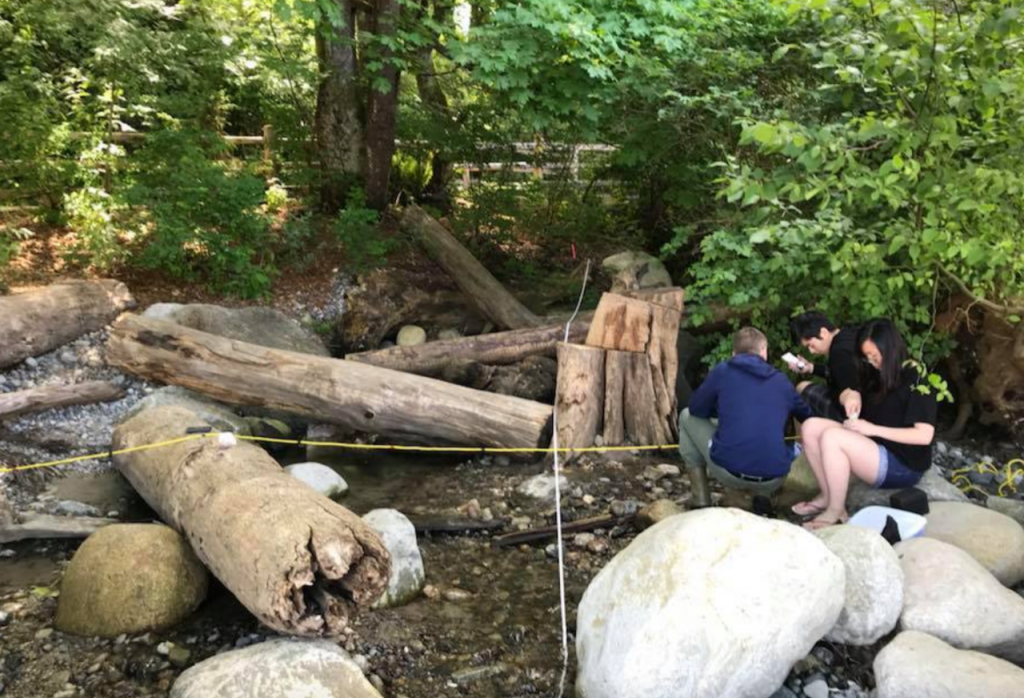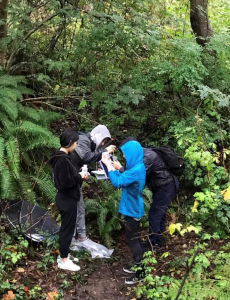
Celeste Leander recently took students in BIOL 342 (Integrative Biology Laboratory) to Salish Creek in Pacific Spirit Park to measure abiotic variables at two sites along an active salmon stream.
Part of the stream had been rehabilitated by the City of Vancouver (site 1), while the rest of the stream had not (site 2). To help understand the impact of rehabilitation, students were tasked to compare abiotic variables between the two sites and submit their reports to the City.

Through this project, students are getting hands-on learning experiences while also contributing to local knowledge building and sharing. Exploring a real-world issue situated in the context of their own community helps to foster a sense of place and brings relevance to what students are learning in the classroom, making it more meaningful and memorable.
What did students do?
While all students measured all variables (there are 7 total), each group of 4 students was assigned one of the variables to focus on. They will get the data from the whole class for their assigned variable, run statistical analyses, and write a report only on those data that will then be sent to the City.
How did students respond to being in the field?
Students experienced the fieldwork in different ways. Although both sites were about 3 meters from paved roads, some students were in awe at being “in the field”, and a few were really nervous about stepping in mud or on rocks. For these students, it was a very memorable experience. Other students were more familiar and comfortable with the environmental conditions and volunteered to run transect lines through the bush, etc. These students tended to enjoy the supplementary activities of ID’ing trees or counting types of insects (which relates to water pollution).
What did they find?
Students are still analyzing data, but typically, the rehabilitated site has more oxygen and less CO2, while temperature is pretty constant between the sites. The most interesting thing they find is that they can actually see how rich the soil is at the rehabilitated site by watching as H2O2 fizzes away organic material.